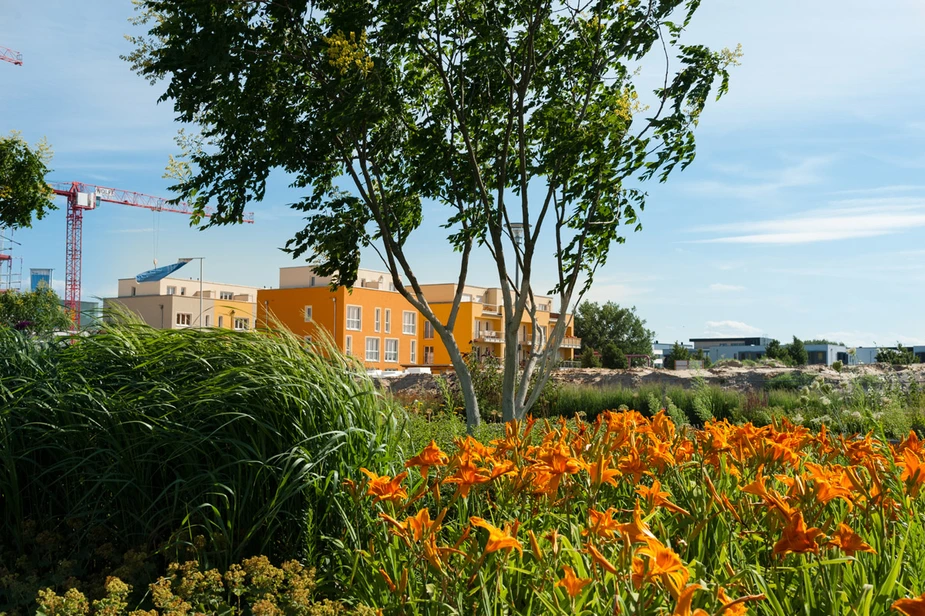District heating with sun power
„Wohnen am Campus“ energy efficient housing in Adlershof
An innovative low-temperature grid provides the residents of „Wohnen am Campus“in Adlershof with environmentally friendly, low-cost heat. The trick is that the grid draws surplus heat from individual solar installations.
Between the Humboldt University of Berlin and the landscape park, the new “Wohnen am Campus” district is being developed in Adlershof with a mixture of rental and owner-occupied flats in town houses, apartment complexes and student residence halls. Each has its own high energy standard.
The local energy provider BTB Blockheizkraftwerks- Träger- und Betreibergesellschaft mbH Berlin offers a solution here which is interesting in both financial and environmental terms: a low-temperature grid for the new district in which residents can feed surplus energy from their own solar installations into the common grid. “Modern homes consume very little energy, particularly because the legal standards are very high”, explains Andreas Reinholz, Project Lead at BTB for the “Wohnen am Campus” district. “The high supply and return temperatures of typical district heating are no longer economical in new construction areas due to the low energy needs of the buildings”. Normally, the water flows in at 110 degrees Celsius and returns at 55 degrees, through pipes buried in soil that averages 10 degrees more than usual throughout the year. In the Adlershof new construction area, the supply temperature is only 60-65 degrees, a significant reduction in heat loss to the surrounding soil.
“The aim of the concept is to consider the district and local heat grids holistically, from generation to distribution into the buildings, and to better integrate heat from lower temperature levels into grid operation”, explains Professor Lars Kühl from the Institute for Energy-Optimised Systems at the Ostfalia University of Applied Sciences, Wolfenbüttel, which is supporting the innovative “Newton Project” from the scientific side, within the scope of construction of the “Wohnen am Campus” district. “This new construction area is perfect for the innovative energy concept, because all the surplus energy from individual buildings means it has extremely low heating needs”, explains Kühl. For the first time, the related low heating needs make it possible for BTB customers in the “Wohnen am Campus” district to feed surplus power generated through solar energy into the grid and then, in the darker months, to draw out district heating from the CHP as needed. “It works like seasonal energy storage”, explains Reinholz. The first solar installation will go into operation in autumn this year, with two more following soon thereafter. “Here we can show what opportunities district heating now offers”, Reinholz explains with pleasure. These opportunities pay off. Compared to conventional district heating grids, “Wohnen am Campus” will use up to 20 percent less primary energy and generate up to 15 percent less carbon dioxide. “We’ve learned a great deal in Adlershof for future construction projects”, Reinholz sums up.
By Chris Löwer for Adlershof Special
